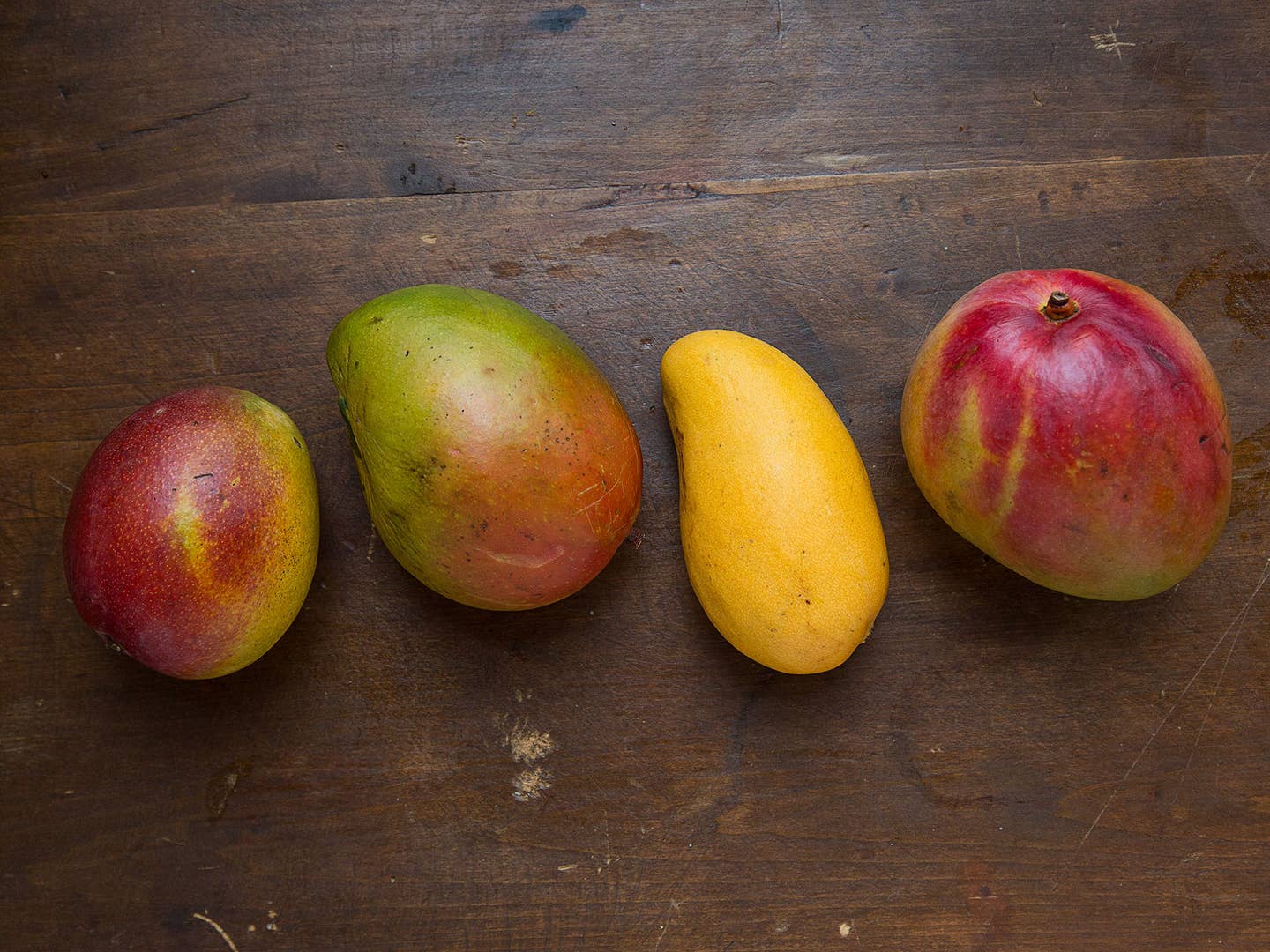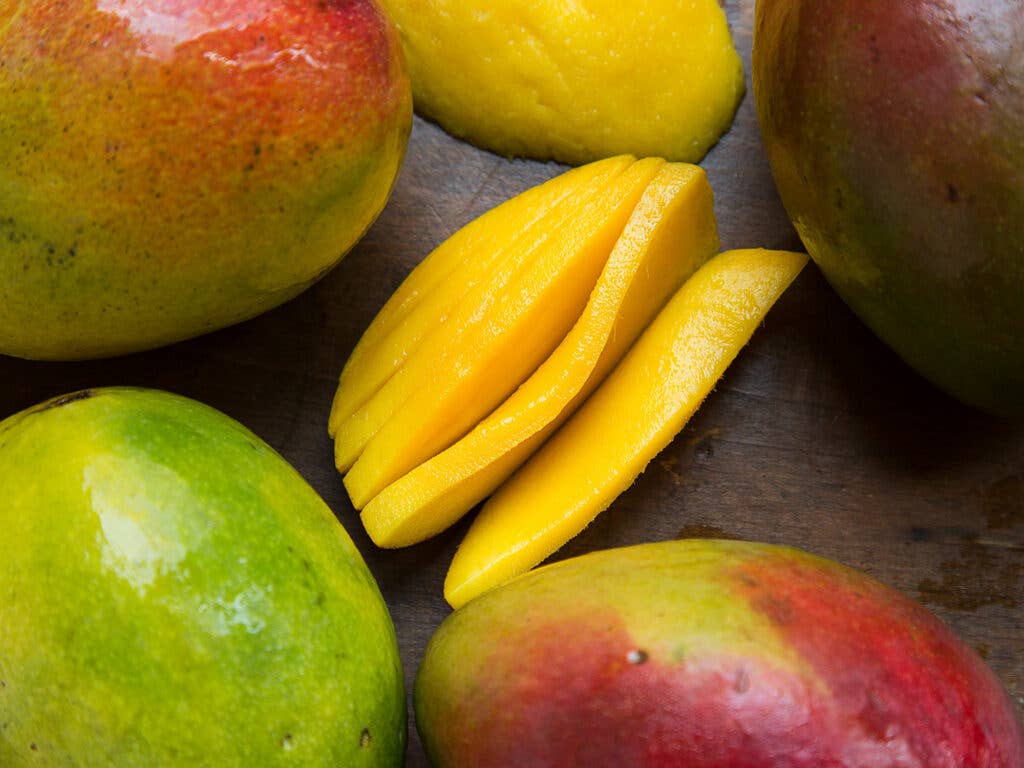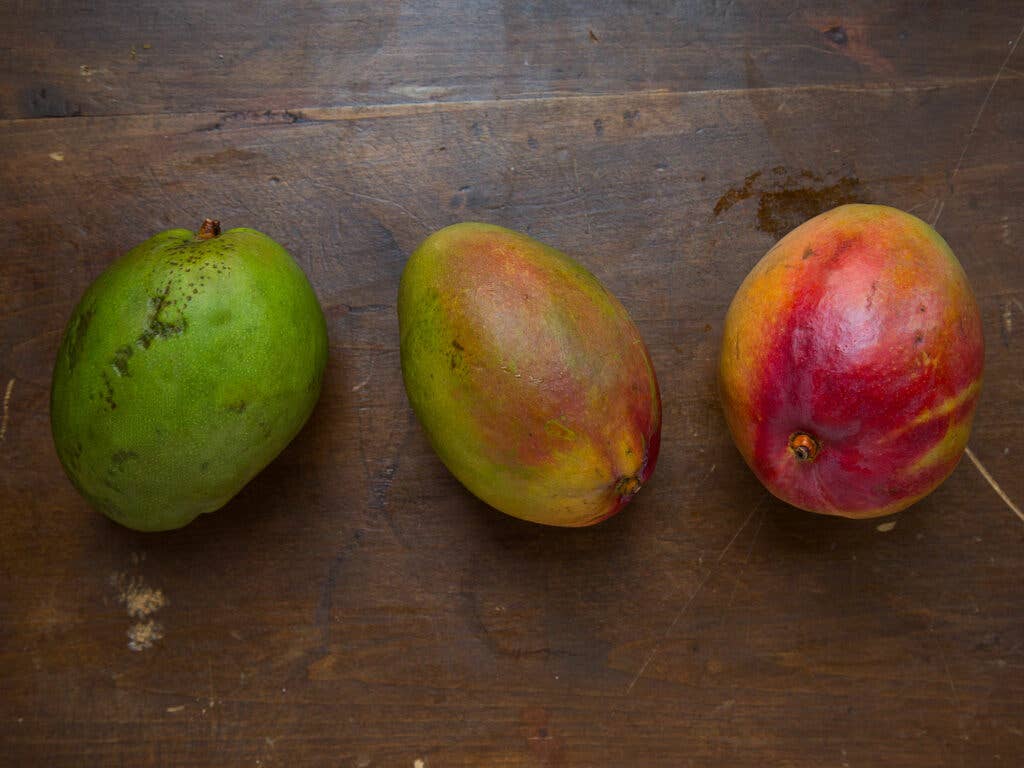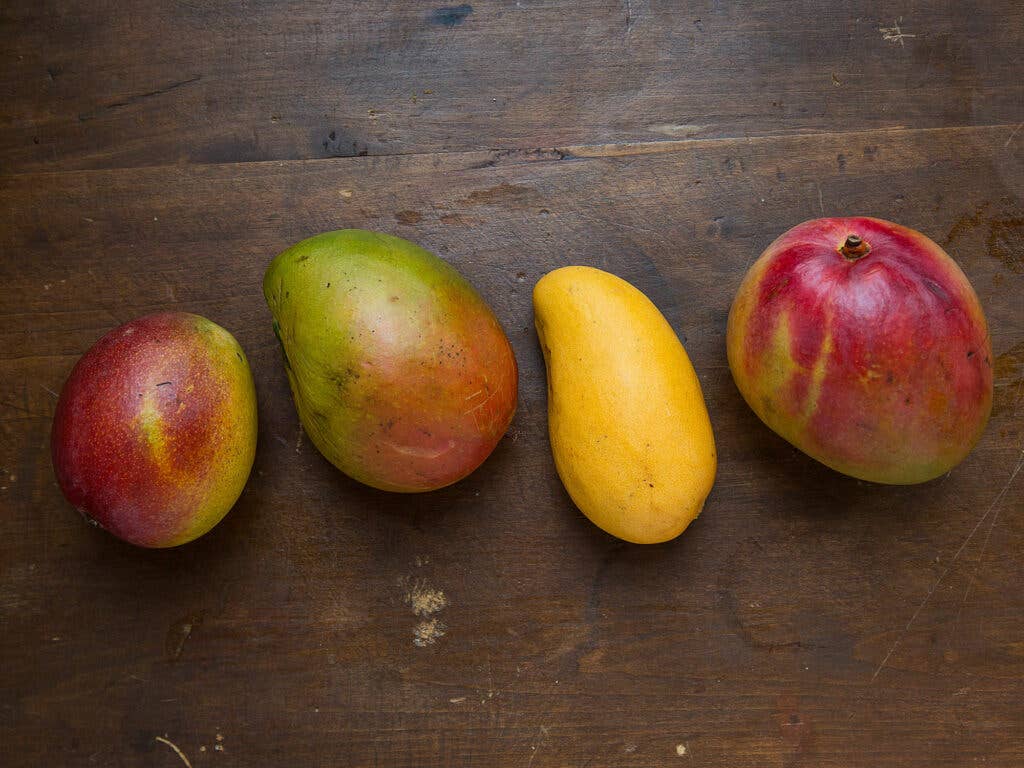

My father is something of a mango whisperer. He tells me that in India, where he grew up, it is an official responsibility of one family member to hand-select the mangoes for his or her household. This person must be able to distinguish between the different varieties, know the exact moment when a ripe mango is ready to be eaten, and identify which mangoes can be used to make chutney and which should simply be eaten by themselves.
You may not have a mango whisperer in your family. And in that case, shopping for and choosing mangoes can be overwhelming. You might end up with a mango that’s impossible to cut, overly stringy, or outrageously sour; mangos don’t reveal all their secrets to casual inspection.
Here are the guidelines you need to become the mango whisperer of your family. And when you go shopping: Skip the big supermarkets and head to Indian or Asian groceries—you'll usually get higher quality (and more diverse) mangos at a better price.
How to Tell When a Mango is Ripe

Some mango varieties will turn more soft and aromatic than others, but for the most part there are three things to look for in shopping for a ripe mangos, or deciding when the mango you’re ripening yourself is ready to eat.
- Texture: This is pretty straightforward. For most mangos, the first stage of ripening involves getting nice and soft—think the same feel as a ripe avocado.
- Color: The mango will go from green to some shade of yellow/orange. The mango doesn't have to be fully orange, but it should have mostly orange or yellow spots. The big exception to this rule is the Tommy Atkins variety, which will not change color—this mango is best used in sour applications, like pickling (more on this in a moment).
- Fragrance & Sap: This is the most important tell for when a mango is ready to eat—it will get very fragrant and ooze sap without prodding. For the most part, regardless of texture or color, if a mango is filling the room with fragrance and also sapping, it's ready to eat. The major exception here is the Ataulfo, which may not turn super fragrant or sappy even when it is fully ripe (instead, it gets wrinkly—that's a surefire sign it's ready to go).
Note that if you purchase a mango at this stage, you’re going to want to eat it pretty much immediately, though you can keep it in the fridge for up to five days (after that it’ll start to lose flavor and become more difficult to cut).
But finding perfectly ripe mangos at most American markets is also tricky. To speed up the ripening of less-than-ready mangos at home, wrap each mango with newspaper or cover them with a towel. Paper or fabric gives the mangos a head start while still allowing them room to breathe.
Four Mango Varieties to Try

There are dozens of mango varieties out there, but depending on where you live, these four are what you’ll most likely find in American groceries. Most people consider the ataulfo (champagne) variety as the highest quality mango available in the U.S.; your perfect mango will largely depend on your tastes and what you want to do with it.
Aamchur is made by drying mangoes like these and are available on Amazon.
Appearance and aroma: Small, yellow, not super fragrant or sappy, a little wrinkly.
Season: Available in the U.S. year-round, but peak season is April through August.
Taste: Intensely sweet and tangy—ataulfos are known to be more complex in flavor than your average mango.
Works great with: Itself! Given the delightfully different flavor of Ataulfos, most people enjoy eating them by themselves, straight out of the skin over the sink. But ataulfos also work great in mango ice cream.
Appearance and aroma: Large, bright yellow, fibrous flesh (use a sharp knife to cut it), quite fragrant and sappy.
Season: Mid April to late May.
Taste: Extremely sweet.
Works great with: Mango lassi—since the Haden is so sweet, so you won't need to add any additional sugar.
Appearance and aroma: Green-ish pink, not very fragrant.
Season: Year-round.
Taste: Very tart and tangy.
Works great with: Cocktails, chutneys, baking, pickles, and any other usage that requires the application of heat—this is not a mango you would typically eat by itself.
Appearance and aroma: Greenish-yellow, large, smooth, creamy flesh.
Season: Early June to August.
Taste: Very sweet.
Works great with: Itself or a slightly less sweet mango lassi.
Priya Krishna is a freelance food writer and the author of Ultimate Dining Hall Hacks. Follow her on Twitter at @PKGourmet. Shailendra Krishna is her father and mango whisperer.
Keep Reading
Continue to Next Story










